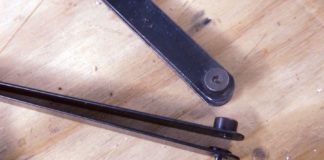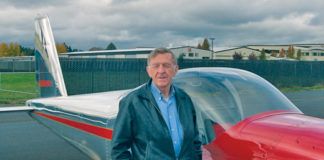For most pilots who consider spending $100,000 or more on an SLSA, the availability of hull and liability insurance is critical to the decision. At Sebring, longtime Avemco representative Jim Lauerman opened his company’s files to reveal valuable insights into the aviation insurance industry in general and Avemcos experience so far with SLSAs. Lauerman is Avemcos new president, and he has personally studied the entire record of the company’s SLSA accident statistics. His forum was presented in conjunction with Avemcos announcement at Sebring that full coverage will be offered on all SLSAs (airplanes) except floatplanes and amphibs. As the only direct provider of general aviation insurance, Avemco gathers its own data, sets premiums and writes claims checks. The company, which offered aviation insurance beginning in 1961, sells policies in all 50 states and the District of Columbia. It insures more than 50,000 aircraft and pilots. The Statistics The information shared was relatively preliminary, Lauerman said. It comes from the first 2.5 years of Avemcos LSA experience, and is for SLSAs (factory-built aircraft), not Experimental-category aircraft that qualify as LSAs. He purposely did not identify specific SLSA types, and he took pains to avoid accident details that might identify a particular persons involvement. Before revealing the numbers, Lauerman defined some insurance terms. Policy year is one aircraft insured for one year. A pilot insured for 25 years would provide 25 policy-years of data. Loss frequency is the percentage of customers in a given class of business with a claim every year. Loss severity is the dollar cost of the average claim. Knowing these numbers, the company can figure what the total losses will be, and that is part of the planning process. So far, with 314 policy-years of data, Avemcos SLSA losses are twice those of conventional GA airplanes, Lauerman said. Taildragger SLSAs have a record six times worse than trigear GA planes. Motivations and Problems As a direct writer of policies for tens of thousands of small-aircraft owners and pilots, Lauerman said, Avemco sees LSA as a natural niche. “We really do want to make it go because it will help bring people into the industry in general. When there is bad news, we need to share it and help the industry make adjustments. “The objective is to resolve issues, not identify culprits. One surprise,” he said, “is that there is not yet a good network of shops that work on the SLSAs. So for repairs, these aircraft need to be trailered a long way, which costs money. This problem should reduce with time.” Parts availability and salvage value are also problems. “There is no history, so the salvage buyers are offering little for the remaining good pieces,” Lauerman said. He stressed that SLSAs are neither worse nor better than other lightplanes, but they are different. What could possibly be a problem with these aircraft for an experienced pilot? Primarily, low wing loading gets high-time pilots in trouble in crosswinds and gusty conditions. Most lightplanes are somewhere near 10 to 18 psf wing loading, while SLSAs are more likely 7 to 10 psf. Its simply not what most pilots are used to. One of the most interesting details, Lauerman said, is that the experience level of the pilot did not seem to matter; if there was an SLSA accident, it happened early in the process. People probably need more transition training than they think they do, especially highly experienced pilots. “Once experienced pilots get the training, they are fine,” Lauerman said. “But you cant assume that a simple little airplane will be easy to fly.” Arlynn McMahon, a training center manager in Lexington, Kentucky, has more than 11,000 incident-free hours as a CFI. Lauerman quoted her saying she would much rather teach a brand new student in an SLSA than a transitioning 500-hour private pilot. Its an attitude problem for the experienced pilot from the beginning. As a result, her company requires 5 hours of transition training, which higher-time pilots consider insulting. One horror story: An Avemco customer with well over 5000 hours owns a high-performance, retractable-gear airplane, and he had just completed a good, thorough flight review in the airplane. He bought a trigear SLSA, had a 2-hour checkout, very shortly lost directional control of the aircraft trying to land in a gust, and totaled it for a $115,000 loss. The pilot admitted that he had not made the mental transition to the light wing loading. Unconventional controls in some SLSAs (such as ground steering and braking) may also cause problems. Europeans are used to short, slow touchdowns, often on grass runways with these aircraft, but Americans are more likely to fly and touch down fast, slamming onto pavement. Landing gear and pilots reputations have suffered. Additionally, documentation and training materials tend to be scarce for some SLSAs. Lauermans recommendations are: 1. Choose your aircraft carefully, based on the type of flying you will do. 2. Consider more than appearance and performance. Study likely missions and design history. 3. Look at the quality of construction and check for good documentation and training resources. 4. Insist on a thorough checkout. (Avemco has decided on a minimum dual checkout requirement of 5 hours plus a CFI-signed flight review.) 5. Know the systems cold before operating the aircraft solo. Sit in the airplane for quite a while before flying. A blindfold cockpit check is a good idea. 6. Think about wind and its effects. 7. Practice pattern work in various configurations and conditions. Get comfortable. 8. Stay current, and be humble about your abilities. 9. Finally, leave yourself an out. For information, visit
-D.M.




